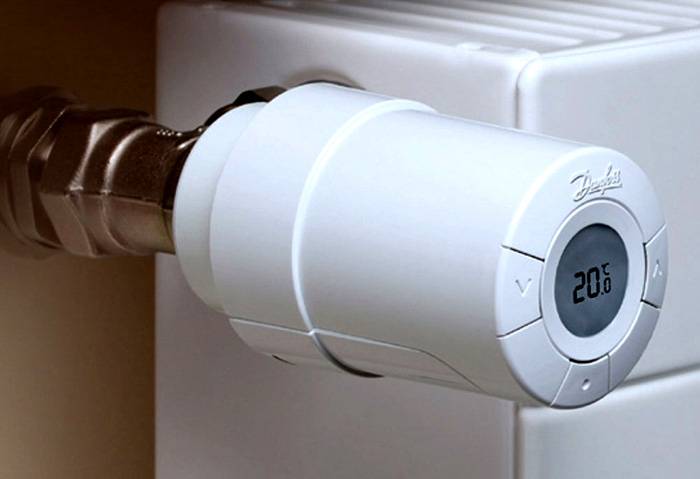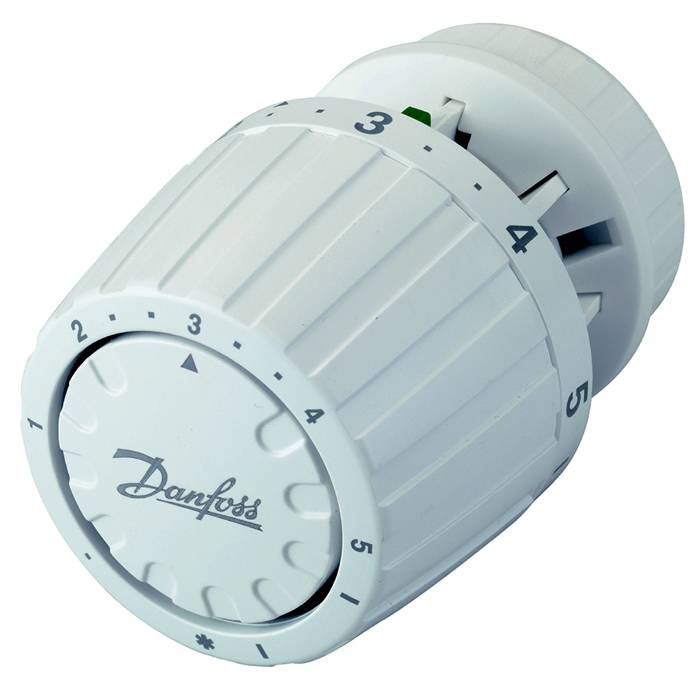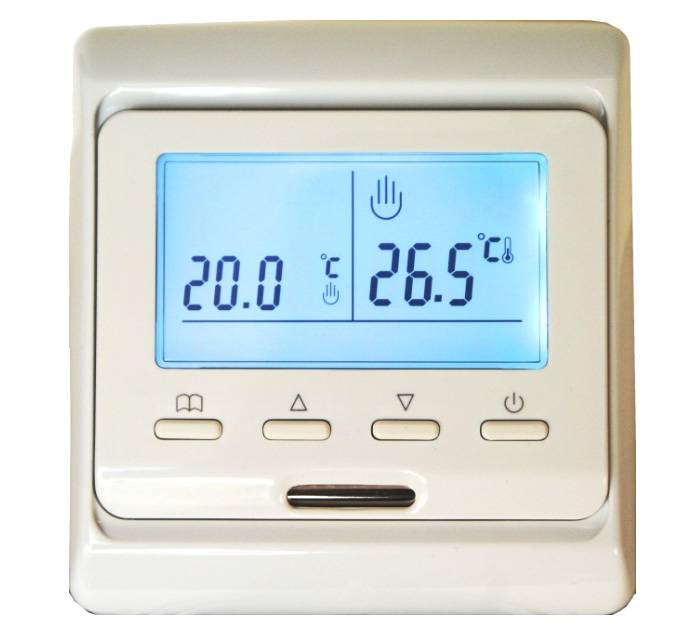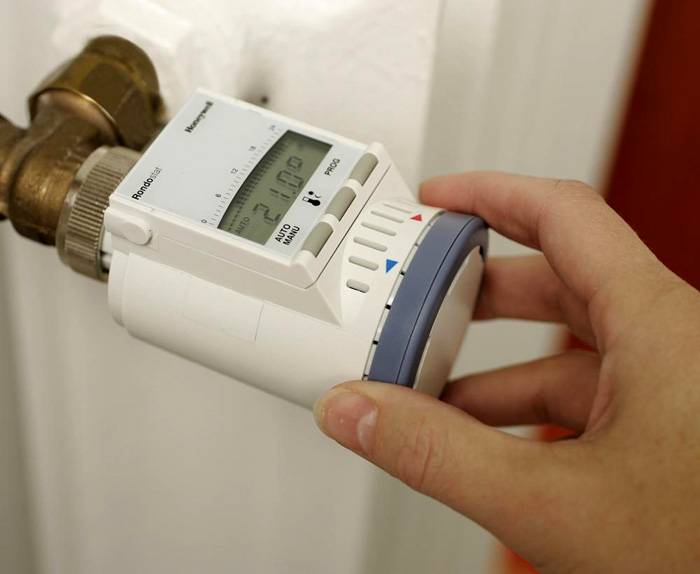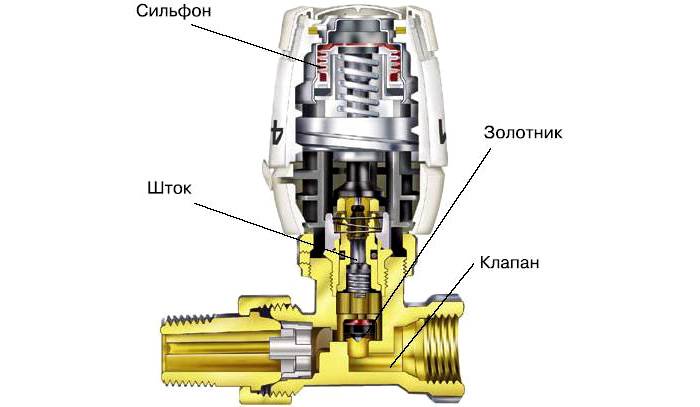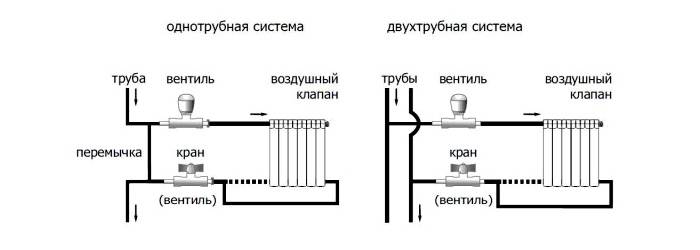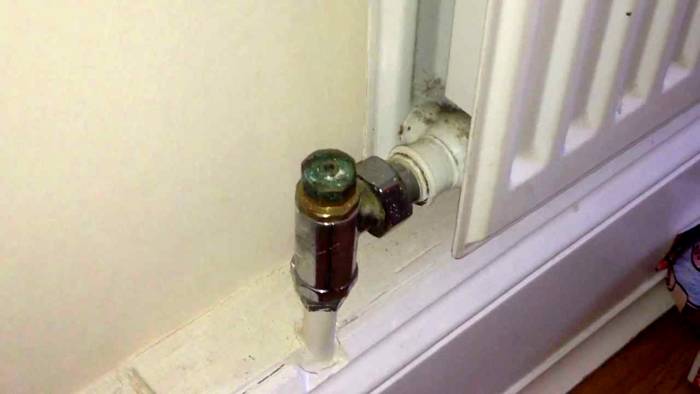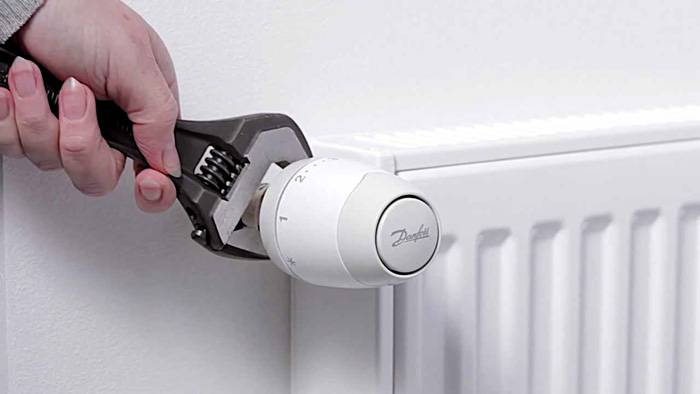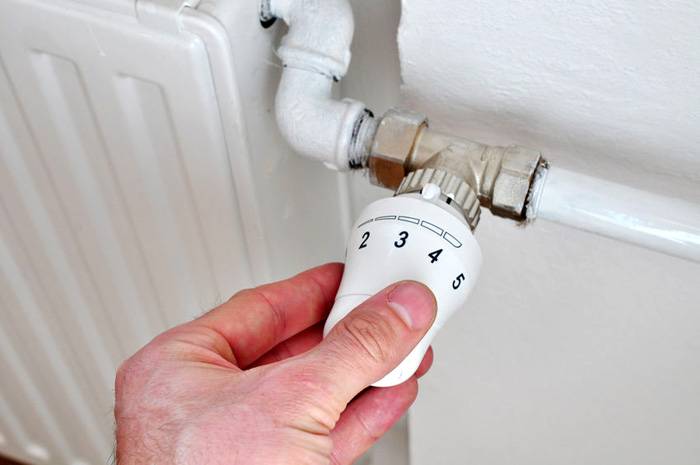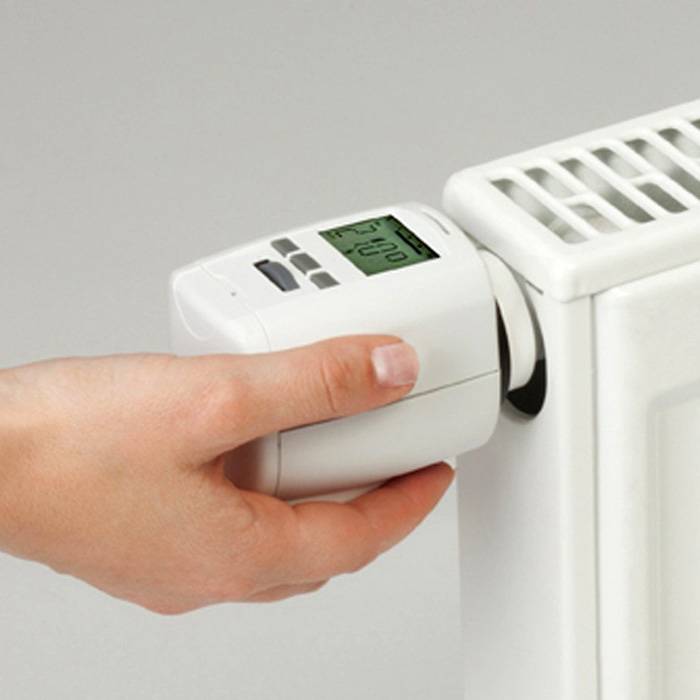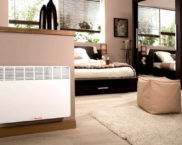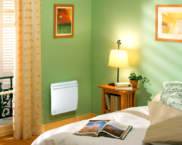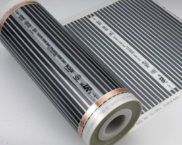Why do you need a thermostat for a heating radiator, and which one to choose
Any system requires control, including heating. The thermostat can cope with this task. The main function of the device is to control the level of the coolant supply. It mounts directly to the battery inlet line. A thermostat for a heating radiator is used to control the temperature level in a room. At the same time, you need to know how to choose the right device and how to correctly mount it. We will talk about this in this review.
The content of the article
- 1 A thermostat for a heating radiator - what is it?
- 2 Thermostat options for radiators
- 3 Types of thermostats
- 4 The design of temperature controllers on heating radiators
- 5 Choosing a device
- 6 Installation of the device
- 7 Installation and selection tips
- 8 Video: installing a thermostat on a heating radiator
A thermostat for a heating radiator - what is it?
A thermostat is a device that is installed at the entrance to the battery to control the flow of the heat carrier. This device provides a comfortable temperature and saves money if meters are installed or a heating boiler is installed. It allows you to disconnect a separate battery from the network, that is, it acts as a shut-off valve.
The greatest benefit from a thermostat for a heating radiator is felt in those rooms where the temperature fluctuates throughout the day. For example, in the kitchen with windows facing south.
Temperature control is carried out using a valve, which is installed in front of the device. Thanks to modern developments, you can choose a model that fits perfectly into the interior of the room.
Thermostat options for radiators
All thermostats work according to the same principle: a movable valve inside the kit opens and closes the inlet flow in the circuit, depending on the parameters or the type of thermostat. The bellows, which responds to fluctuations in air temperature and interacts with the stem that opens the valve, is the main part.
The unit is divided into two options:
- Liquid valve. The bellows is filled with fluid and expands, thereby responding to changes.It has the best response to pressure fluctuations, at a low cost (about 250 rubles).
- Gas-filled regulator. Has an almost instantaneous response to temperature fluctuations.
The device is influenced by the following indicators:
- Sun rays or drafts.
- Outside temperature.
- Auxiliary heat sources.
- Installation in confined areas.
And also all units can be divided into subgroups by type of work.
Types of thermostats
Battery heating regulators can be classified according to the principle of operation:
- Mechanical;
- Electronic.
Each variety has its own pros and cons.
Mechanical
The advantages include the absence of the need for external nutrition. The work is based on the physical ability of substances to expand when heated. In appearance they resemble a valve with markings on the upper part, on which the temperature is applied from +14 to + 28 ° C. It must be mounted horizontally.
A mechanical thermostat for a radiator will give you the following benefits:
- Save on the power supply of the device and the cost itself.
- Ease of operation.
- Works completely autonomously.
- There is no need to change the temperature regime in your absence.
Due to its advantages, the device is in great demand.
Electronic
An automatic thermostat for a heating radiator controls the flow of heat carrier without external participation. The device has a built-in screen or panel with buttons.
The thermostat is equipped with a built-in or remote sensor remote control capable of taking data on changes in air temperature. It can be operated at a distance of up to four meters.
Helpful information! The electronic thermostat has the ability to program the temperature for certain hours depending on the time of day.
The adjustment process itself occurs due to the bellows and electromagnetic relay... Additional functions significantly increase the cost of the device. At the same time, the thermostat itself is able not only to decrease or increase the temperature in the room, but also to limit the flow of liquid, that is, to act as an automatic shut-off valve.
Electric thermal valves for heating will give you the following advantages in the operation of the entire circuit:
- Even in your absence, he will independently regulate the temperature.
- You can set the maintenance of a minimum temperature for a non-residential premises, which will be enough for the life of flowers.
- Setting comfortable modes for different times of the day.
And also all automatic units are divided into:
- With closed logic
- Open.
In the first case, the indicators are set. It is good for adjusting your home temperature.
In the second case, with open logic, the equipment is able to adjust to any system on its own. Only setting up such a unit already requires special skills and abilities, therefore it is used on an industrial scale.
The design of temperature controllers on heating radiators
The design features of the devices differ from the heating system. So, there are options for one-pipe and two-pipe systems.
At the same time, all mechanical thermostats are equipped with a sensitive head and a special valve, which function with each other without additional energy consumption, since the connection is at an automatic level.
The thermal head includes an actuator, a regulator and the fluid element itself (gas or elastic). And also the design includes a thermoelement (bellows) - a device that is made in the form of a cylinder, and the walls on the inside are corrugated. This cylinder is filled with a working medium and reacts to changes in temperature conditions.
As the temperature rises, the bellows expands and the stem shuts off the flow of the heat carrier. With a decrease in temperature, opposite processes occur.
Helpful information! Manufacturers guarantee a long bellows life that can withstand over a thousand compression / expansion cycles.
The electric thermostat in the package will have additional sensors and a programming system that allows you to set certain temperature conditions.
Choosing a device
To choose a thermostat for a heating radiator, you should decide on the technical parameters of the installed heating system. Namely, before buying, you need to find out:
- Valve dimensions. Measure the diameter of the plug in the battery or pipeswhere you plan to install.
- One or two pipe system. With two pipes, the load on the thermostat is higher, therefore, it is necessary to choose equipment with a higher level of hydraulic resistance.
- If the system is with a circulation pump, then the description for the thermostat will indicate whether it is suitable for it.
And also independently or after consulting with the seller, choose the type of thermostat for yourself:
- Mechanics or automation.
- Liquid or gas.
- Temperature (5 to 30 degrees Celsius).
Note! Decide on the place of installation before buying, in order to know a straight line or at an angle of 90 degrees the device you will need.
Prices will differ from manufacturer to manufacturer, and will be influenced by a mechanical or automatic temperature sensor for heating you choose.
For example, here is a table with an approximate cost.
| Danfoss | Picture | Overn trop | Picture | Luxor | Picture | |
|---|---|---|---|---|---|---|
| Thermore- walkers | 835 |  | 610 | 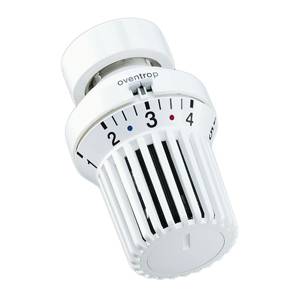 | 765 | 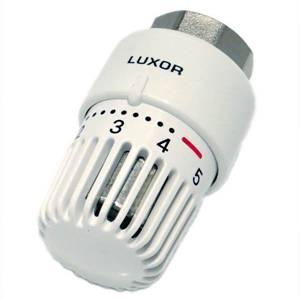 |
| Straight innings | 790 | 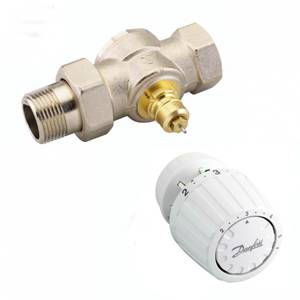 | 738 | 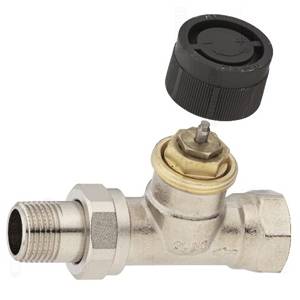 | 518 | 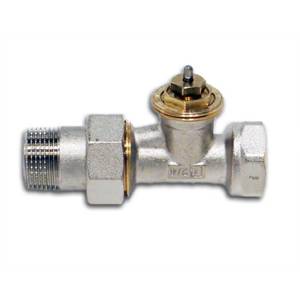 |
| Feedback innings | 790 |  | 738 |  | 518 |  |
| Lower corner for two pipes | 960 | 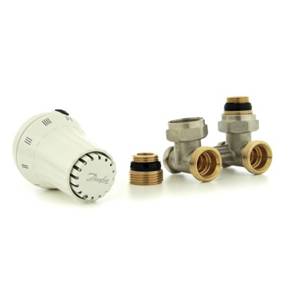 | 770 | 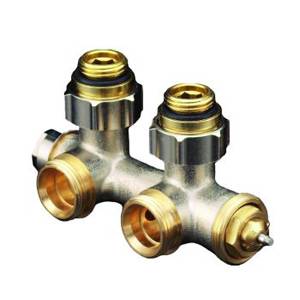 | 890 | 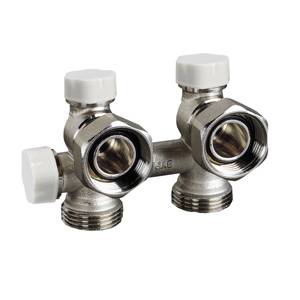 |
| Corner innings | 570 | 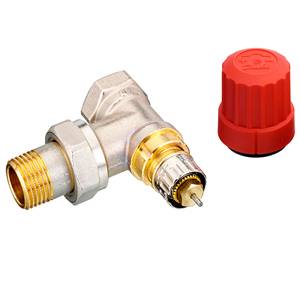 | 448 | 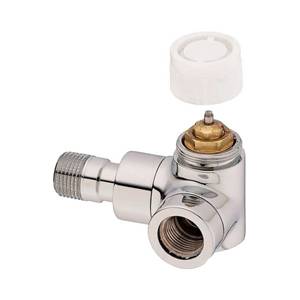 | 365 | 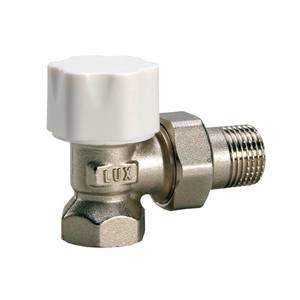 |
You can find cheaper models, since the price varies quite a lot from the manufacturer. For automatic temperature controllers with a remote sensor, you can see prices from 750 rubles and above, programmable equipment costs from 680 rubles.
Prices are average, depending on the region and purchase option (through a regular store or the Internet).
Installation of the device
The process of installing equipment is simple, but if you do not want to carry it out yourself, you can always turn to professionals.
Instructions:
- Disconnect the battery from the system. To do this, close the ball valve or shut-off valve. Then drain the water from the battery, blow out the radiator.
- Remove the adapter. Before doing this, lay a lot of rags on the floor to absorb liquid. Secure the valve body with an adjustable wrench, and with the second remove the nut from the adapter pipe. Then remove the adapter from the device case.
- Installing the adapter. Screw on the flare nut and collar. In this case, pre-clean the thread, and wrap it with a locking tape. Wrap it clockwise, doing 3-5 times, then smooth the tape. Assemble the adapter, radiator and corner nuts.
- Fit a new collar. Install the collar and the blind nut on the pipe. All actions are performed with a screwdriver.
- Installation of the thermostat. Fix the device in the directions of the arrows. Shade the nut between the regulator and the valve, fixing is done with an adjustable wrench. Tighten the nut at the same time. Do all the actions carefully. After installation, make sure the fastening is tight.
- Fill the battery with water.
Installation and selection tips
- Care must be taken when installing the sensor, as fragile parts are included in its design.
- Use the manufacturer's instructions.
- The valve is installed in the radiator plug hole.
- Place the thermostat in a horizontal direction.
- Install the valve as indicated by the arrows.
- Before buying, you should decide on the type of construction.
- If you are unable or unwilling to install the thermostat yourself, contact the professionals.
- The device should be set up first in a closed room with tightly locked windows and doors.
Thus, a thermostat is a very useful and necessary thing that allows you to regulate the air temperature in the room, as well as save money. It is ineffective to use the device only on cast iron batteries, in all other cases it will quickly pay for itself.
To make it easier for you to carry out independent installation of the thermostat, we suggest watching the following video.
Video: installing a thermostat on a heating radiator





